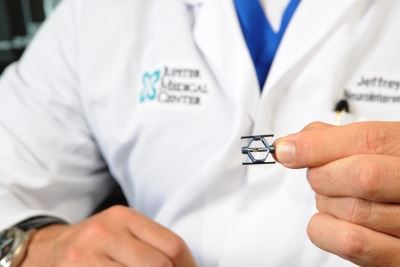SpineJack® System

Osteoporosis is a condition that causes bones to gradually thin and weaken, leaving them susceptible to fractures. It affects an estimated 10 million Americans, 80 percent of whom are women. Experts believe women are more susceptible to osteoporosis because their bones tend to be lighter and less dense, and because hormonal changes after menopause accelerate the loss of bone mass. In addition, there are another 34 million people with low bone mass, which puts them at an increased risk of developing osteoporosis.
Osteoporotic vertebral compression fractures (VCFs) are the most common medical condition experienced by those with osteoporosis or low bone mass. The lifetime risk of osteoporotic fracture for those older than 50 years of age is one in two for women and one in four for men. About 2 million fractures occur each year due to osteoporosis. VCF’s affect an estimated 25 percent of all postmenopausal women in the U.S. The prevalence of this condition steadily increases as people age, with an estimated 40 percent of women age 80 and older affected. Although far more common in women, VCFs are also a major health concern for older men.
People who have sustained one osteoporotic VCF are at five times the risk of sustaining a second VCF. Occasionally, a VCF can be present with either minor symptoms or no symptoms, but the risk still exists for additional VCFs to occur.
Causes
VCFs occur when the vertebral body in the spine collapses, which can lead to severe pain, spinal deformity and loss of height. These fractures more commonly occur in the middle (thoracic) and lower (lumbar) portions of the spine. While osteoporosis is the most common cause, these fractures may also be caused by trauma or metastatic tumors.
People with severe osteoporosis may experience a VCF as a result of simple daily activities, such as stepping out of the shower, sneezing vigorously or lifting a light object. They often report twisting and hearing a pop that later is diagnosed as a VCF. In people with moderate osteoporosis, it usually takes increased force or trauma, such as falling down or attempting to lift a heavy object to cause a VCF.
Treatment
For decades the only nonsurgical treatment for these fractures included
bed rest, bracing (which limits mobility) and pain medication. Vertebroplasty
has been used since the early 1990’s and more recently kyphoplasty.
In vertebroplasty, bone cement is injected directly into the fractured
vertebra. The cement hardens quickly and acts like an internal cast. In
kyphoplasty, a balloon is inserted into the fracture to expand the space
before the cement is added. Neither procedure restores the vertebral body
to full height.
Today patients have the SpineJack® implantable fracture reduction system as a new option for treatment for osteoporotic acute vertebral compression fractures. This revolutionary treatment was invented by a French physician whose inspiration was the diamond-shaped car jack that is commonly used to lift a car when changing a flat tire. Hence the name: SpineJack®.
The procedure utilizes an intra-vertebral body titanium implant that resembles a car jack. With X-ray guidance, a thin hollow needle is inserted through the skin and back muscles to the spine and the SpineJack® implant is deployed into the fractured vertebral body and then expanded to restore it to its normal height. Two implants are used, one on each side of the vertebral body. They are locked into the desired expanded position and bone cement is then injected to stabilize the restored vertebra. The implant becomes encapsulated with bone cement resulting in pain relief for the patient.
This procedure is done on an outpatient basis and patients experience significant pain relief within just a few days. After the procedure, patients typically resume normal activities two weeks after the procedure. SpineJack® is appropriate for patients who have been diagnosed with a VCF within the past four to six months.
-
Jupiter Medical Center
We want to help you! If you have questions about our services and what we can offer you and your loved ones, please reach out.



